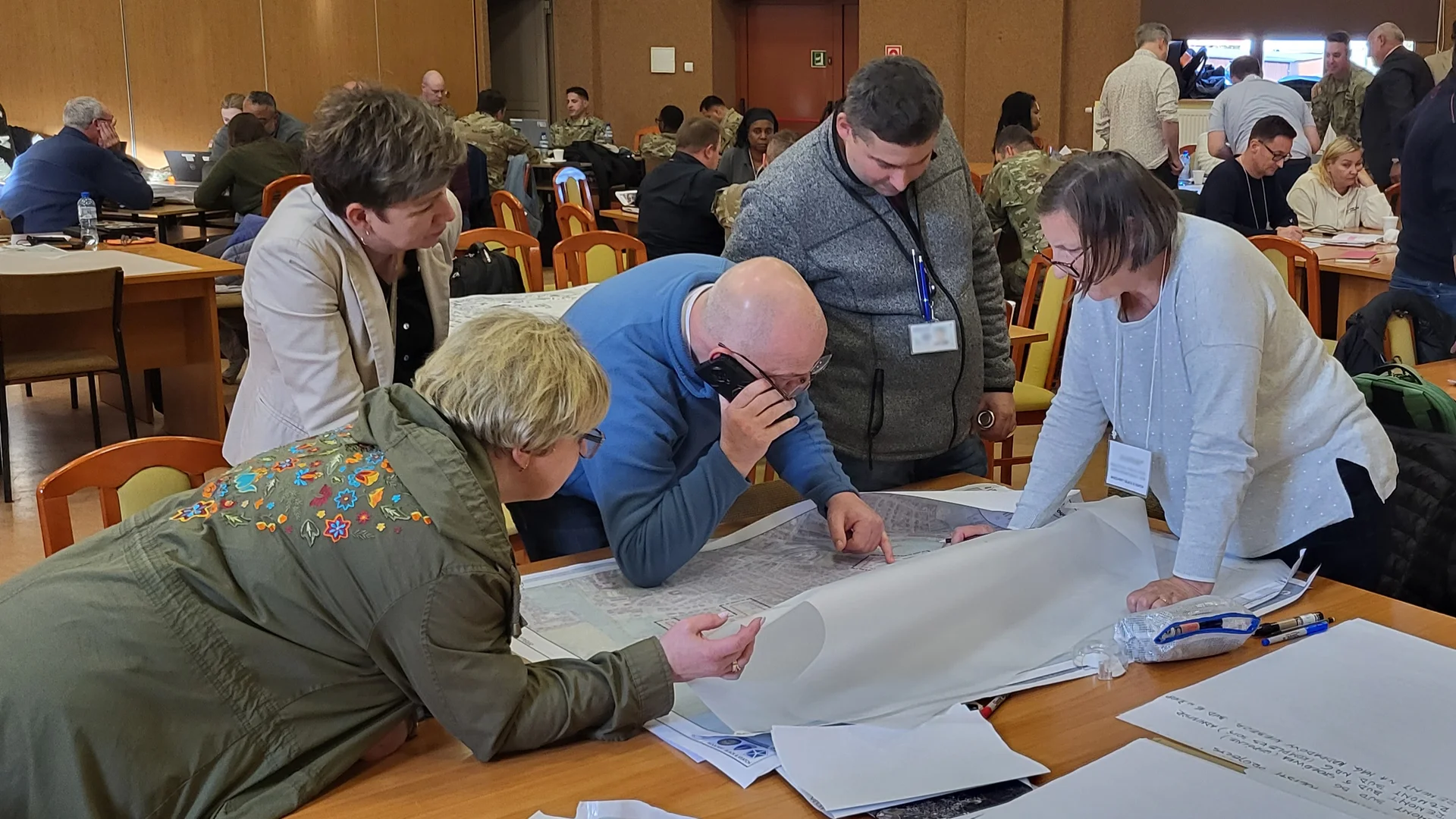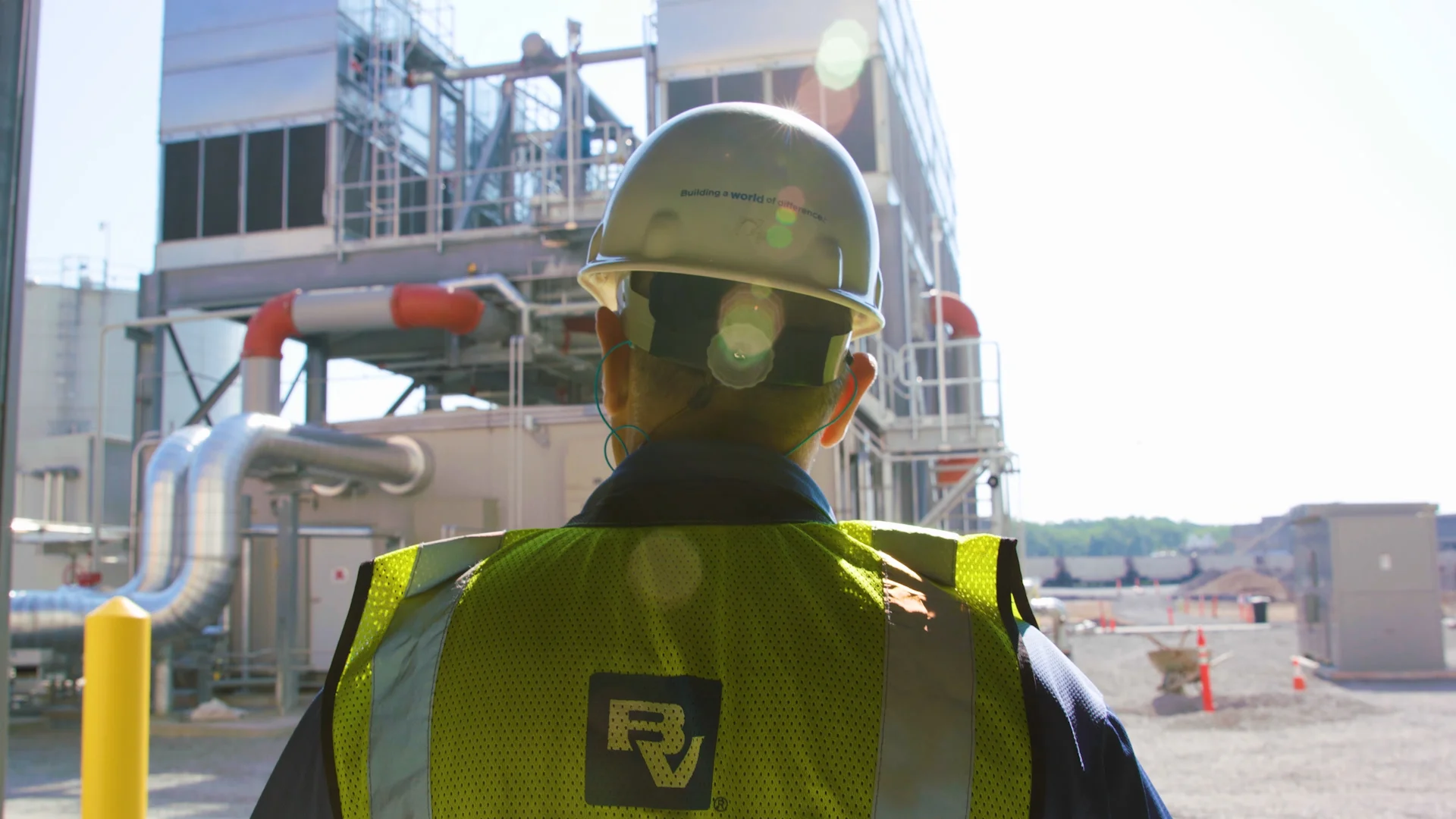Ensuring a successful handoff in Poland

by Nathan Kent-Harber, AICP, Steve Baird, AICP, M.SAME, and Chad Hartley, PMP, AICP, LEED AP, M.SAME
As a multi-year, multi-billion-dollar critical national security initiative, Poland Provided Infrastructure (PPI) focuses on facility and infrastructure investments to support the growing presence of U.S. forces in the country, but does so in a way that shares costs while requiring for projects to be designed and constructed to meet U.S. requirements for use by American forces operating in the country.
As part of the program delivery, U.S. funding and European Defense Initiative spending are complemented by Polish government investments. PPI was established under the Enhanced Defense Cooperation Agreement, signed by the United States and Poland in 2020. The program aims to lay the foundation for U.S. Air Force and U.S. Army operations in Poland for the next 50 years.
The success of the project handoff process, particularly from agreement to planning to design, is crucial to the overall smooth execution and ultimate success. These project examples were a massive undertaking and could not have been achieved without close collaboration with U.S. and Polish stakeholders, as well as a team of subject matter experts spanning many disciplines.
From the outset, the goal was to plan with the design in mind.
Planning to design
The United States and Poland have different established approaches to project execution, traversing from planning to design to construction. While the United States typically views planning as a distinct early stage in the process, Poland considers it part of an uninterrupted continuum. Other differences include how project execution encompasses design standard variances and cost estimating approaches. These contrasting styles can complicate project execution if not managed properly. However, through detailed communication and coordination, the project teams and stakeholders involved in the PPI arrived at a common understanding and generated ways to move forward.
The U.S. project team initially produced a more conservative cost estimate than the Polish stakeholders. A balancing effort was required to achieve consensus. The team communicated with the relevant parties to reconcile cost estimates that the Polish and U.S. government stakeholders both found feasible and acceptable.
Overall, the cultural differences in project execution and cost estimation approaches did not prevent completion or success. In fact, effective communication and a desire for alignment prevailed and led to a greater understanding and appreciation for each other’s different approaches. Understanding the processes was a key factor. The U.S. contractor, Woolpert – Black & Veatch Joint Venture, created a long-term roadmap for defense facilities and infrastructure in Poland. The team provided master planning and programming support across Poland for U.S. Air Forces in Europe – Air Forces Africa and U.S. Army Europe and Africa. This allowed for a comprehensive understanding of both Army and Air Force missions in the country. Under separate contracts, the joint venture is also developing next-phase design packages for several of the facility and infrastructure projects identified in the master plans.
The planning and design teams established for these projects included planners, architects, engineers, and other subject matter experts from key U.S. and Polish-based subconsultants. Each firm played a significant role in contributing to the development of the initial vision plan, requirements analysis, DD1391s, individual area development plans and area development execution plans, and multiple concept design packages. Work progressed from agreement to requirement to plan and finally, to 35 percent design, within approximately two years.
Refining the process
Many lessons were learned during the handoff from planning to design. These takeaways can be applied to similar efforts elsewhere for achieving better results and more efficient processes.
All phases of the plans were produced while working closely with both U.S. and Polish stakeholders. The planning team organized and led collaborative on-site charrettes. As with any complex effort, there were more stakeholders involved than originally anticipated, resulting in large bilingual working groups. Many of the identified mission requirements needed additional refinement. The planning team adapted quickly to successfully capture all needed requirements, creating an organized and coordinated process. A key stakeholder likened the effort to “building the plane while flying it,” which captures the dynamic nature of planning and designing facilities in an overseas forward operating theater.
Insights were obtained from the design team, including project managers, architects, and engineers who were part of the project delivery team. The group gained valuable knowledge on how planning projects transitioned from initiation to planning to design, and developed improved workflows and strategies to ensure success in executing these critical projects and maintaining partnerships with other countries investing in U.S. requirements.
The lessons learned during the project handoff can be applied to similar efforts elsewhere for better results and more efficient processes. For instance, the planning team learned early in the process that it was crucial to include host nation partners up front. While this ensured that local and regional requirements were properly addressed, it also provided the benefit of having insights into cultural issues that contributed to successful completion.
International cooperation
The Europe District of the U.S. Army Corps of Engineers (USACE) works with the Polish Ministry of Defense and U.S. European Command and supports design and construction efforts for PPI projects. This includes early design development, design review processes, and on-site construction oversight to ensure facilities meet U.S. requirements and enable seamless interoperability. The PPI project locations range across Poland and are managed by the USACE Powidz Resident Office.
PPI has provided tangible benefits through international cooperation, project funding, and prioritization. It has allowed for training Polish counterparts in U.S. master planning processes and best practices. The program has established and validated the first deliberately co-planned planning process between the United States and Poland, opening the path toward full project funding. It also enables the Army, Air Force, and USACE to have logical, defined plans to move to the next stages of project funding, design, and construction.
The program has developed and prioritized an integrated list of critical facility and infrastructure investments for funding at multiple defense installations across Poland. These outcomes demonstrate the enduring importance of international cooperation in achieving shared goals. PPI is a testament to the power of collaboration, the value of joint planning for diverse missions, and the importance of investing in critical infrastructure to prepare for the future.
Early awareness
As the PPI design projects progressed, it became clear for the need to understand what the requirements and criteria are as captured during the planning phase. If planners address items such as buildable areas and utility connections during plan development, the designers can begin with a solid foundation of data. The key is to have a robust planning charrette report available. In the case of PPI projects, this step was replaced with a requirement analysis, providing a different level of detail than one would typically see. This created additional risks for the design team.
At the outset of a project, it is vital to define a line of demarcation on what is known and unknown about the site and project. Utilities data and associated capacities are the toughest bits of data to capture; if not known or available, this creates an inherent blind spot in the planning process. In after action reports, a recommendation was to create a summary table to show the level of detail that is collected and available. This is something that the planning team can do to hand over to the design team. The design will need to validate the plan.
A pair of early concerns from the design team were identified, specifically relating to PPI projects.
First, planning documents did not fully identify all design criteria. The plans compared criteria but did not always indicate which was controlling and why. This had an impact on the design. While some factors do not impact design costs, it may impact adjacent projects/sites. This will drive up costs. The second concern included designer perspective. This is where it is important for the planner to think as a designer when collecting and analyzing data. As an example, the design team went into its work thinking a certain room was a simple communications room with a desk. As the design progressed, it grew in complexity and capabilities. This meant a requirement for sprinklers, but then later reviews removed the sprinklers. By defining this early in the planning process, it can save the designer significant rework.
A valuable takeaway from the designers supporting PPI has been the ability to call planners and ask why certain elements were approached in a particular way, who the government decisionmakers were, or why certain information was omitted. The cross-cutting communication paved the way for efficient resolutions. Clearly indicating the “why” of a decision or indicating unknowns and assumptions will help the designer do their job better. If a designer understands the level of effort in planning, then the design team can better allocate resources. Having the appropriate budget and being able to talk to the planners is essential. This could even extend to, when practical, having the planning team represented prior to the design request-for-proposal, at the design charrette, or attending a pre-charrette meeting between the companies if a different firm developed the plan.
Collaborative partnerships
The success of the project handoff process was crucial to the overall success of the ongoing PPI program. Collaborative partnerships established early on were maintained to ensure that the project handoff was successful.
The experiences of the planning and design team also provided a comprehensive understanding of the challenges and solutions encountered during the development of these facility and infrastructure projects and created a solid foundation for next phase design and construction tasks. With an outlook for enabling 50 years of operational readiness in the region, the PPI program needed to get off on the right start.
This article first appeared in TME (The Military Engineer), May-June 2025
Contact Us
Looking for a partner in innovation?
Let's Talk
